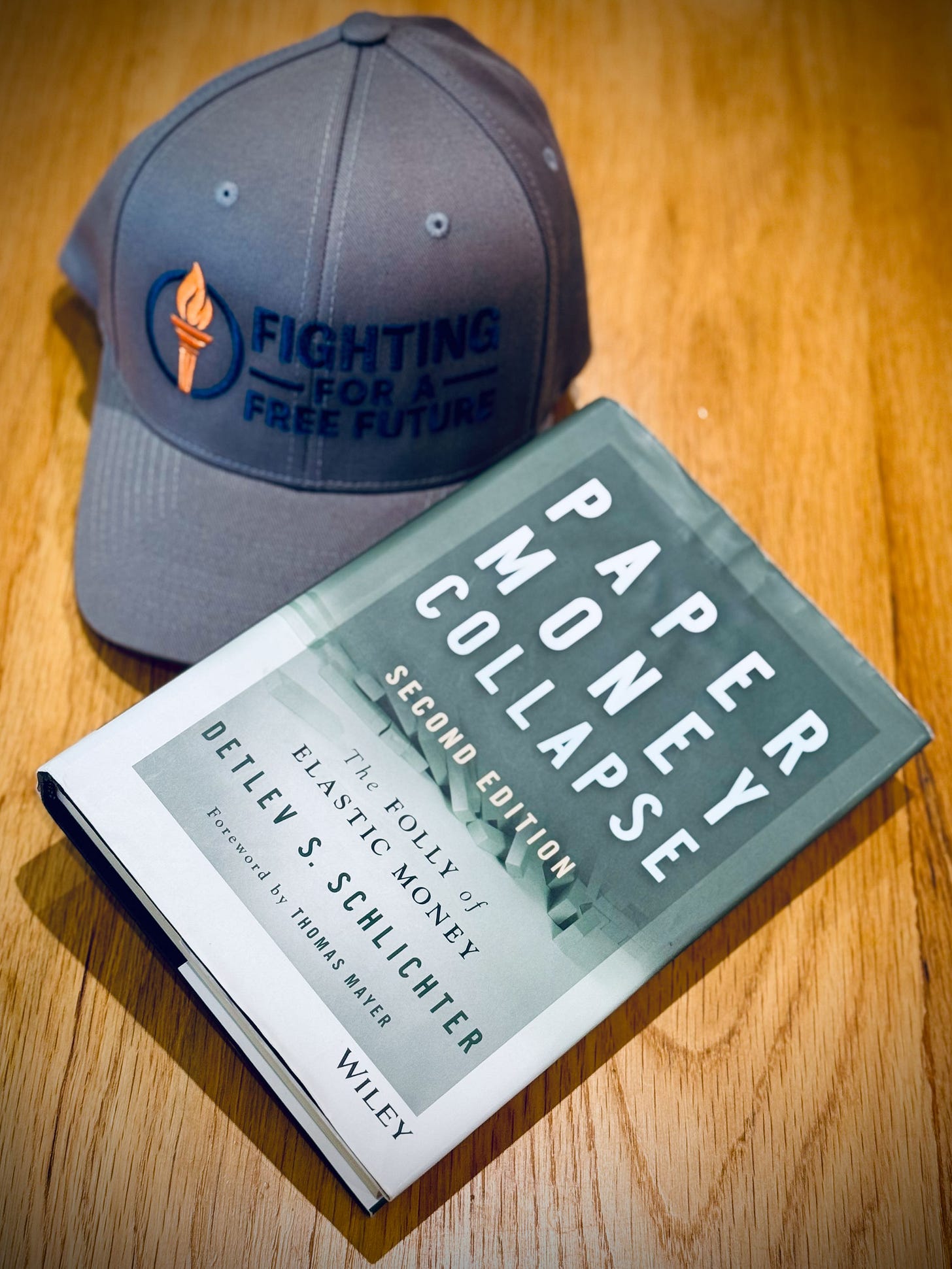Paper Money Collapse: The Folly of Elastic Money, Schlichter – An Austrian Review
The errors of the present monetary orthodoxy, the effects of credit expansion, and the intellectual fallacies behind price-level targeting - Detlev Schlichter's book helps explain our current crises.
Detlev S. Schlichter’s Paper Money Collapse: The Folly of Elastic Money is a scathing Austrian School critique of today’s fiat monetary orthodoxy. It challenges the prevailing belief that central bankers can engineer prosperity by “managing” the money supply and targeting a little inflation.
Schlichter argues – convincingly – that our system of ever-expanding paper money is inherently unstable, unjust and headed toward ruin. In an era of unprecedented money printing and deficit spending, his message is more urgent than ever.
Elastic money and the boom–bust cycle
Schlichter’s central thesis is that “elastic” money – paper currency unconstrained by any commodity – operates like a Ponzi scheme, requiring constant new infusions of cash to appear sustainable. Ever since the last ties to gold were cut, central banks have injected new money at will, creating a secular inflation that quietly steals purchasing power. Policymakers claim that steady, modest inflation is beneficial so long as they’re in control, but Schlichter shows this is a dangerous illusion. Far from delivering stability, continuous monetary expansion pushes interest rates artificially low, misdirecting investment and creating ever-larger boom–bust cycles.



